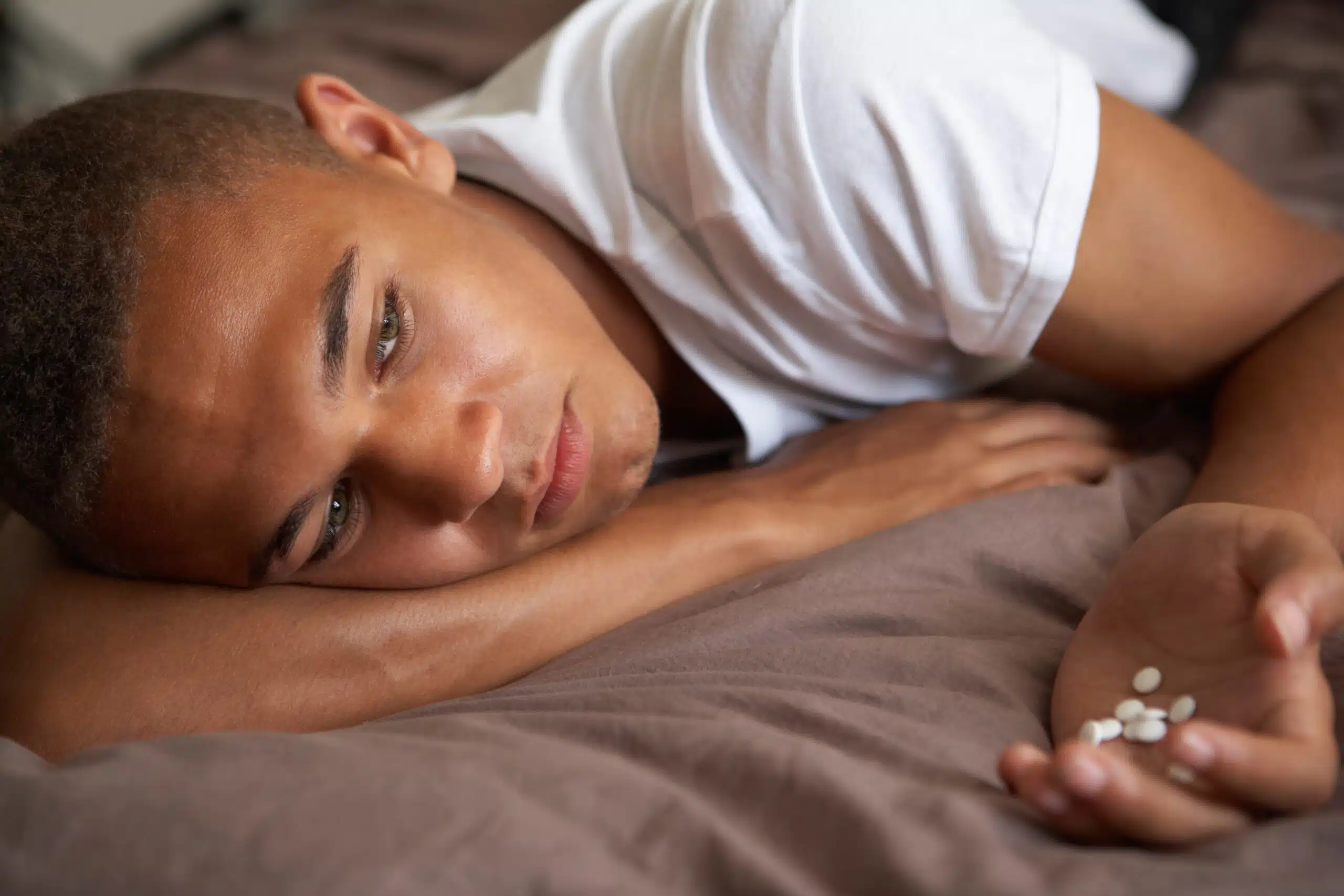
Practicing Self-Care With a Mood Disorder
Mood disorders primarily affect one’s emotions. Most mood disorders involve periods of extreme sadness, extreme happiness, or both. In some cases, your teen may alternate between periods of elation and periods of extremely low mood. Certain mood disorders also involve other moods or emotions, such as irritability and anger.
What are Mood Disorders?
The term mood disorder is a broad term mental health professionals use to describe all types of depression and bipolar disorders. Mood disorders can occur in people of all ages and demographics.
Mood disorders can happen in children, teens, and adults. It’s important to know that the symptoms may vary between teens and adults. As a result, it can be more challenging to diagnose mood disorders in youth and some teens because they struggle to express in words how they feel.
Although it is not uncommon for anyone to experience changes in mood depending on specific circumstances or situations, mood disorders are persistent. For a mood disorder to be diagnosed, your teen’s symptoms must be present for several weeks.
What are Examples of Common Mood Disorders?
There are several types or categories of mood disorders. Common examples include all depressive disorders, bipolar disorders, and other mood-related conditions. Some mood disorders are gender-specific, and others may evolve due to illness or substance abuse.
Major depressive disorder
Also referred to as major depression or clinical depression, major depressive disorder is characterized by periods of overwhelming and extreme hopelessness, sadness, and emptiness. These periods are also accompanied by various emotional, cognitive, and physical symptoms.
Bipolar I disorder
Formerly called manic depression, bipolar I disorder involves alternating episodes of mania and depression. Mania consists of a period of euphoric and sometimes irritable moods. Mania also involves increased energy levels and activity. During manic episodes, someone with bipolar I will also frequently engage in risky behaviors that can have lasting, harmful consequences for themselves and others.
Bipolar II disorder
Bipolar II disorder involves hypomanic episodes rather than periods of mania. Hypomania is a less severe form of mania. To be diagnosed with bipolar II disorder, you must have at least one episode of major depression accompanied by one at least one episode of hypomania and no history of manic episodes.
Cyclothymic disorder
Cyclothymia is diagnosed when someone has at least a two-year history of episodes that resemble hypomania and major depression; however, they do not meet the diagnostic criteria for bipolar II.
Seasonal affective disorder (SAD)
Seasonal affective disorder or seasonal depression is a type of depression that occurs with seasonal change. It is common in areas where the arrival of fall and winter months are accompanied by fewer hours of daylight, leading to depressive symptoms.
Depressive disorder due to medical conditions
This diagnosis is used for circumstances where a teen may have all of the symptoms of depression; however, their symptoms are directly related to an underlying (co-occurring) medical condition.
Substance or medication-induced bipolar disorder
This condition occurs when someone experiences bipolar disorder symptoms due to substance abuse or the use of some prescription medications.
Substance or medication-induced depressive disorder
This diagnosis is used when a teen (or adult) experiences depressive symptoms or develops a depressive disorder due to alcohol or drug abuse or as a result of using a prescription medication that causes depressive symptoms.
New mood disorders in the recent DSM
When the new edition, the fifth edition of the Diagnostic and Statistical Manual of Mental Disorders was released in 2013, three new mood disorders were included. They are:
Disruptive mood dysregulation disorder
This disorder was added to the DSM for youth and teens between ages six and eighteen who present with persistent irritability, anger, and frequent temper outbursts without any significant or apparent provocation.
Persistent depressive disorder
This depression diagnosis includes both chronic major depressive disorder (that has persisted for a minimum of two years), and a condition previously referred to as dysthymic disorder or dysthymia, which is a lower-grade severity of depression.
Premenstrual dysphoric disorder (PMDD)
A PMDD diagnosis is based on one or more specific depression-related symptoms that develop in the week before menstruation. Once menstruation begins, the symptoms independently resolve. Symptoms of depression may include anger, feeling hopeless, anxiety, mood swings, irritability, and tension, along with other mood symptoms. Combined, a total of five symptoms must occur.

Treatment and Help for Mood Disorders
Mood disorders affect millions of teens (and adults) across the nation. With effective treatment, it is possible for your teen to understand their symptoms and develop the coping tools necessary to live a full and effective life. Treatment for mood disorders generally includes therapy and medications.
Therapy
Cognitive-behavioral therapy or CBT is a common form of therapy used in mood disorder treatment. CBT is a form of talk therapy proven effective for many mental health and substance use disorder treatment needs, including depression and bipolar disorders. In CBT sessions, a therapist helps teens change negative thoughts and behaviors by teaching them healthy coping strategies.
Medication
While helpful for some, mental health medications are not ideal for everyone seeking mental health treatment. Your teen’s providers at Beachside will work with them to understand their symptoms and learn more about their current and previous psychological and physical health history. Using this knowledge, they will determine if medications might enhance their treatment plan.
If medications are deemed beneficial, your teen’s provider may prescribe specific medications to reduce the intensity of certain symptoms that could hinder treatment progress. Antidepressant medications are commonly used to address symptoms of depression and certain bipolar disorders. Other examples of drugs that might be used for bipolar mood disorders include mood-stabilizing medications, antipsychotics, and anticonvulsants.
Self-Care Tips for Mood Disorders
In addition to getting help at a teen-focused treatment program at Beachside, there are several self-care tips your teen can use to manage their symptoms outside of the therapy environment.
- Develop a routine – Routine is vital to mood stability. Help your teen create a schedule (for your day or week) and encourage them to adhere to it regardless of mood or energy levels.
- Limit stressors – Mood disorders and stress are linked. Whenever possible, it is important to reduce stress. Teens can accomplish this by not making too many commitments, reducing workload, and planning for academic and social obligations.
- Monitor mood – Keeping track of one’s mood daily can help provide a better understanding of how factors such as medications, sleep, and other events may influence mood. Keeping a journal or using an app to chart can help.
- Exercise – Engaging in regular physical activity, even low-impact exercises such as walking or swimming, are excellent ways to manage mood. Exercise helps the body produce and release hormones that are crucial for feelings of happiness and relaxation. Increases in these hormones can also improve mood and emotional regulation.
- Take all medications as prescribed – It is crucial your teen follow their medical or mental health provider’s orders regarding mental health medications. These medications are the most effective when taken as directed and in the recommended doses. It is also important not to make any changes to medications without talking to your teen’s provider or their treatment team at Beachside.
- Sleep hygiene – Poor sleep, including irregular sleep or a disrupted sleep schedule, can dramatically affect mood. Learning more about sleep routines can help your teen better understand how sleep can impact mood.
- Avoid using alcohol or drugs – Substance use and abuse can cause mood alterations. It can also worsen mood disorder symptoms. Also, if your teen uses a mental health medication for mood disorder symptom management, using alcohol and drugs can be dangerous and, in some cases, deadly.
- Develop a strong support network – Supportive family and friends can help your teen manage their day-to-day mood disorder symptoms. They can offer support, guidance, and an outsider’s perspective on mood and other emotional challenges. They can also provide a source of support to confide in during challenging and triggering moments.
- Join a peer support group – Support from like-minded peers can offer reassurance and a sense of safety when faced with particularly challenging triggers. It is helpful for your teen to know they are not alone and others are going through similar experiences. For this reason, peer support groups are a common element in many mental health treatment aftercare programs. The sense of community developed by participating in a peer support group can provide your teen with life-long friendships and a strong source of social support.
- Create a plan for harmful thoughts – While it may sound worrisome; but self-harming thoughts, self-harming behaviors, and thoughts of suicide are not uncommon for people living with a mood disorder. Creating a plan that includes people your teen can call during these moments can help prevent physical harm.
Support and Mood Disorder Treatment at Beachside
Suppose you are concerned that frequent alternations in mood or frequent episodes of depression may indicate your teen is living with a mood disorder. In that case, it is essential to seek treatment at a teen-focused treatment program like ours at Beachside. Mood disorders and associated symptoms do not resolve independently. The most effective treatments for mood disorders generally involve a combination of therapy (such as cognitive-behavioral therapy) and medications.
Mood disorders, like other mental health conditions, present symptoms unique to the person in terms of severity and frequency. For example, while all teens with Bipolar I will experience alternating episodes of mania and depression, the severity and duration of their individual episodes and symptoms will vary from person to person.
Because mental health treatment needs are highly individual, treatment programs to help teens understand and develop the skills to manage their symptoms must be as well. At Beachside, we will work with your teen and family to develop a mental health treatment plan that addresses their physical, emotional and spiritual needs. Let us help your teen take their first steps toward mood disorder recovery. Contact us at Beachside Teen Treatment Center to learn more about how we can help your teen on this journey.




